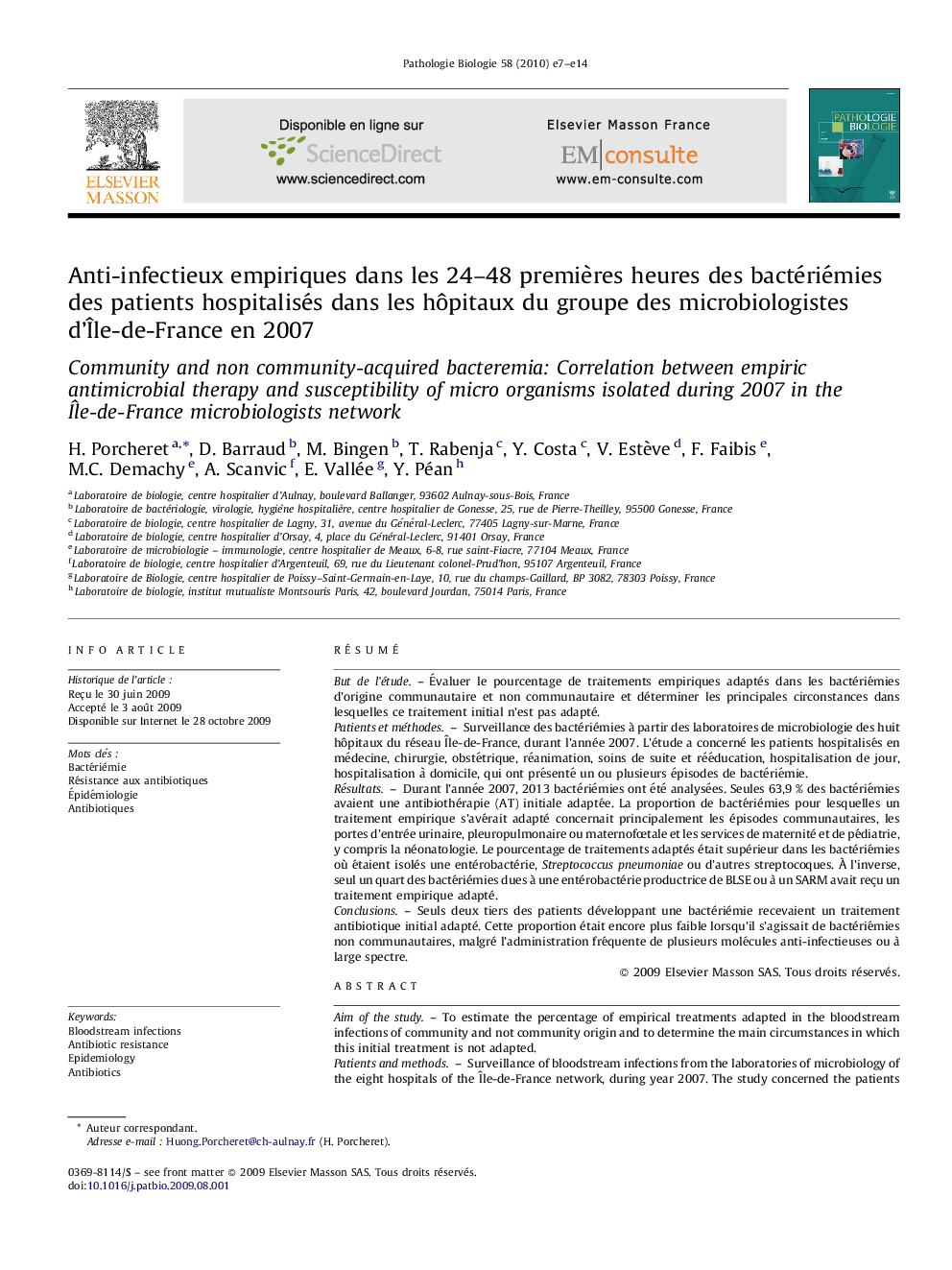| Article ID | Journal | Published Year | Pages | File Type |
|---|---|---|---|---|
| 4136502 | Pathologie Biologie | 2010 | 8 Pages |
RésuméBut de l’étudeÉvaluer le pourcentage de traitements empiriques adaptés dans les bactériémies d’origine communautaire et non communautaire et déterminer les principales circonstances dans lesquelles ce traitement initial n’est pas adapté.Patients et méthodesSurveillance des bactériémies à partir des laboratoires de microbiologie des huit hôpitaux du réseau Île-de-France, durant l’année 2007. L’étude a concerné les patients hospitalisés en médecine, chirurgie, obstétrique, réanimation, soins de suite et rééducation, hospitalisation de jour, hospitalisation à domicile, qui ont présenté un ou plusieurs épisodes de bactériémie.RésultatsDurant l’année 2007, 2013 bactériémies ont été analysées. Seules 63,9 % des bactériémies avaient une antibiothérapie (AT) initiale adaptée. La proportion de bactériémies pour lesquelles un traitement empirique s’avérait adapté concernait principalement les épisodes communautaires, les portes d’entrée urinaire, pleuropulmonaire ou maternofœtale et les services de maternité et de pédiatrie, y compris la néonatologie. Le pourcentage de traitements adaptés était supérieur dans les bactériémies où étaient isolés une entérobactérie, Streptococcus pneumoniae ou d’autres streptocoques. À l’inverse, seul un quart des bactériémies dues à une entérobactérie productrice de BLSE ou à un SARM avait reçu un traitement empirique adapté.ConclusionsSeuls deux tiers des patients développant une bactériémie recevaient un traitement antibiotique initial adapté. Cette proportion était encore plus faible lorsqu’il s’agissait de bactériémies non communautaires, malgré l’administration fréquente de plusieurs molécules anti-infectieuses ou à large spectre.
Aim of the studyTo estimate the percentage of empirical treatments adapted in the bloodstream infections of community and not community origin and to determine the main circumstances in which this initial treatment is not adapted.Patients and methodsSurveillance of bloodstream infections from the laboratories of microbiology of the eight hospitals of the Île-de-France network, during year 2007. The study concerned the patients hospitalised in medicine, surgery, obstetrics, intensive care, following care and rehabilitation, day hospitalisation, hospitalisation at home, who presented one or several episodes of bloodstream infections.ResultsDuring year 2007, 2013 bloodstream infections were analysed. Only 63.9% of bloodstream infections had an adapted initial antibiotic treatment. Among this proportion of bloodstream infections, an adapted empirical treatment concerned mainly the community episodes, the urinary tract, the pulmonary tract, or maternal-foetal episodes and the maternity ward and pediatrics. The percentage of adapted treatments was superior in the bloodstream infections where were isolated an Enterobacteriaceae, Streptococcus pneumoniae or other streptococci. On the contrary, only a quarter of bloodstream infections due to an Enterobacteriaceae producing BLSE or to a MRSA had received an adapted empirical treatment.ConclusionOnly two-thirds of the patients developing a bloodstream infection received an adapted initial antibiotic treatment. This proportion was even lower when it was not about a community origin, in spite of the frequent administration of several anti-infectious molecules or with wide spectrum.
